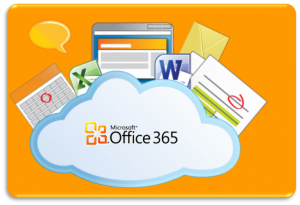 A series of takeaways from a recent Microsoft financial analysts’ meeting — the first in two years — reveals what’s ahead for the company. If they’re smart, it’ll be a focus on the enterprise and cloud services.
A series of takeaways from a recent Microsoft financial analysts’ meeting — the first in two years — reveals what’s ahead for the company. If they’re smart, it’ll be a focus on the enterprise and cloud services.
Last week, Microsoft executives had their first financial analysis meeting in two years, and used it to explain more of the plan for the future of the company. They also hit on many of the topics the media and tech insiders have been speculating about lately. InformationWeek published 11 Takeaways from this meeting on Microsoft’s next moves, and in that spirit, we culled it down to the two biggest takeaways we see from the larger list: the enterprise market and the cloud.
It’s nothing we haven’t discussed before on the blog. There are a lot of things Microsoft wants to spend its time on, like tablets and phones, and many others that it needs to really work on, like Windows 8 improvements and finally convincing those stubborn XP users that enough is enough. But the real money, and sustainable future for the company, lies in its enterprise offerings and its cloud services.
Indeed, three of InfoWeek’s takeaways revolved around the enterprise business as the epicenter of the company’s success:
- Microsoft makes most of its money from large enterprises.
- Microsoft believes consumers are essential to its enterprise business.
- Microsoft will still make most of its profit from the enterprise.
Corporations and governments comprise a full 55% of Microsoft’s business. Consumers and online services are a distant second, contributing 20%. OEMs account for another 19%, and SMBs are a surprisingly small 6%. [Source: InfoWeek]
We’ve argued before that trying to impress the consumer too much will only upset the solid basis on which the company now stands in the enterprise market. No need to pander too much to consumer whims.
On the other hand, there is value in actualizing workplace technologies that mirror the products and interfaces with which those using them are already familiar. So if it’s executed correctly, this could prove a successful approach. Logical user interface is one of the most valuable things you can offer users today.
The other crucial takeaway is the company’s continued work on Office 365 as its cloud-based, subscription serviced suite of essential office computing tools. It’s proven a fair contender for Google Docs, and is already on pace for $1.5 billion in annual revenue.” Subscription services, as we’ve also previously discussed, could prove to be the company’s saving grace in the cloud era.
What crucial takeaways did you find most compelling? Where do you think Microsoft is headed?

